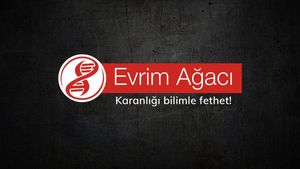The Midwest is currently grappling with the sweltering grip of what many are calling "one of the hottest weeks of the summer," as extreme heat warnings blanket the region from St. Louis to Chicago and even extend to the Mid-Atlantic states. Forecasts suggest temperatures could soar as high as 100°F, creating hazardous conditions particularly for vulnerable populations including the elderly and those with pre-existing health conditions.
On August 27, 2024, Chicago O'Hare International Airport was predicted to reach 97°F, potentially breaking past records. The National Weather Service described the scenario as extreme, noting heat indices could feel as high as 110°F due to high humidity levels. The area is experiencing what meteorologists refer to as the “heat dome” phenomenon—an area of high pressure trapping heat and pushing temperatures above their seasonal averages.
Approximately 75 million people across parts of the Midwest and the Eastern seaboard are under heat alerts as the summer winds down. The oppressive heat has not only created discomfort but also pushed many cities to their limits when it involves energy consumption. The PJM Interconnection—a power grid covering several East Coast and Midwest states—has issued maximum generation alerts, indicating potential strains on power supply as residents crank up their air conditioning units to escape the heat.
According to Josh Weiss of the US Weather Prediction Center, "Today looks like the hottest day for the Chicago area." Indeed, if temperatures reach forecasted levels, this week could mark the highest temperatures recorded this summer, particularly disruptive as Chicago Public Schools resumed classes just as the heat wave began.
While many might depend on air conditioning for relief, not all public institutions such as schools have adequate cooling facilities. This is particularly troubling because during heat waves, the risks significantly increase. This year's heat has caused the highest number of fatalities linked to heat—with 2,325 heat-related deaths reported last year—highlighting the urgency for effective cooling and hydration facilities.
But the unsettling characteristics of this heat wave don't stop with mere temperature measures. The high humidity levels often attributed to something whimsically termed “corn sweat” have added to the discomfort. Essentially, as corn plants evaporate water—a process scientifically termed evapotranspiration—this excess moisture contributes to feelings of higher heat. One acre of corn can release between 3,000 to 4,000 gallons of water daily, significantly impacting the density of moisture enveloping the Midwest, causing it to feel even hotter.
This phenomenon of corn sweat doesn't alter the actual temperature but does escalate the heat indices which can make it feel closer to 100°F or more. For the locals, especially farmers and residents accustomed to dealing with crops, the term is not entirely foreign. Nevertheless, it’s gaining traction as people seek relatable ways to understand the impact of such extreme weather.
Even amid this relentless heat, the Midwest may benefit from meteorological changes. A cold front is pushing southeastward from Canada and is expected to bring some relief beginning mid-week. Until then, residents are urged to stay hydrated, avoid outdoor activities, and seek out cool environments whenever possible.
The oppressive weather not only poses public health challenges but also escalates the risk of disruptions to transport services. High temperatures can warp train tracks, posing significant challenges for rail systems reliant on stable and safe conditions. The potential for rail services to be affected adds another layer of seriousness to the situation.
There’s no denying summer is capping off with conditions reminiscent of those typically observed during peak July heat. Historically, such extremes are less common during late August, but climate change is steadily altering the weather pattern across the U.S. Research indicates rising temperatures along with prolonged heat waves are becoming more prevalent, showing how human-induced climate change is likely extending the warm weather season.
Efforts continue to educate the public on the dangers of heat waves and how they are exacerbated by climate variations. Various campaigns focus on promoting awareness around heat illness prevention, emphasizing the need for adequate cooling solutions. Above all, advocating for proactive measures becomes especially relevant during scenes of high-impact heat conditions like the one currently gripping the Midwest.
Staying informed is key to not just enduring this heat wave, but also preparing for the potential seasons to come. Cooling centers have been set up across towns where residents can find refuge until conditions improve. With expected changing weather patterns, adapting to increasingly extreme climates is more important than ever for both individuals and communities.



